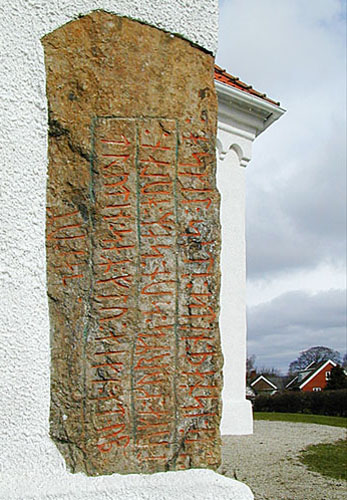| Introduktion

| | Periodiseringen og navngivelse af historien er der ikke altid helt enighed om. Selv blandt fagfolk er der uenigheder og for menigmand kan det være svært at holde styr på den historiske kronologi og dens mange synonyme benævnelser.
I Øresundstid har vi valgt at følge århundredernes kronologi. |
Det geografiske tyngdepunkt i den historiske fremstilling er den Nordøstlige del af Sjælland og den Nordvestlige del af Skåne. Begrundelsen for dette er bl.a., at området, på mangfoldige måder, har været skueplads for begivenheder, der har haft afgørende betydning for hele Øresundsregionen. Men der er også udblik til andre områder i Øresundsregioenen, fx Skanør/Falsterbo i forbindelse med markederne i middelalderen, Lund som centrum for den katolske kirke, Malmø som et vigtigt udgangspunkt for reformationen samt København som Øresundsregionens største by.
Øresundstid er, præcis som de fleste historiske fremstillinger, inddelt kronologisk. Formålet med dette har altid været at skabe overblik og/eller adskille en vis periodes karakteristika fra andre perioder.
Man bør konstatere, at der ikke findes nogen objektiv sandhed i, hvordan historien skal deles op i epoker. Internationalt findes der forskellige traditioner vedrørende epokers navne og tidsafgrænsninger. Eftersom Øresundstid er tilgængelig på både dansk, svensk og engelsk, har vi derfor valgt at strukturere hovedmenuen efter århundreder.
Hovedmenuens opdelingen er således ikke struktureret efter kulturepoker såsom: renæssance, barok, oplysning etc. Ej heller i politiske epoker: adelsvælde og enevælde eller periodiske begreber koblet til økonomiske forhold. For alle begrebernes vedkommende er det vanskeligt at definere og tidsbestemme dem præcist.
Øresundstids kronologiske struktur følger den klassiske inddeling: Fortiden – Middelalder – Nyere tid. Tidsafgrænsningen mellem fortid og middelalder er for Øresundsregionens vedkommende bestemt til omkring 1100. Motiveringen for dette er først og fremmest, at der på dette tidspunkt er etableret en politisk centralmagt, og at den kristne kirke nu har fået afgørende indflydelse. (Lunds ærkestift er f.eks. grundlagt i 1103).
Vi har derfor valgt at tænke i århundreder. På de enkelte kapitelopslag finder man dog de skandinaviske benævnelser.
Vi tror det er en letfattelig struktur, hvor der, på tværs af landegrænserne, kan kommunikeres om Øresundsregionens historie. |